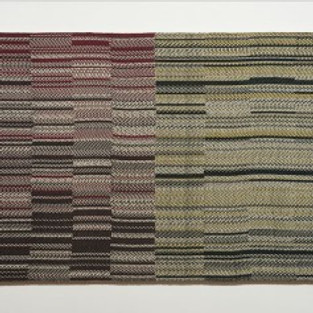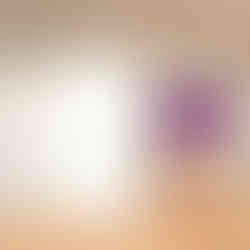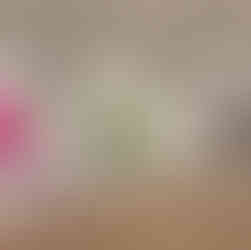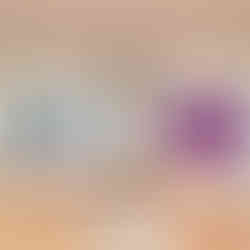
Installation View, Photo credit Jeff Rau, 2016. All Rights Reserved
Translations, Textiles and Time explored at Biola
An exhibition that examines culture, communication and more, through woven and fiber-based art works
By Evan Senn
Tactile expressions of communication and sensory observations are interwoven in the physical evidence of an ancient art form that surrounds us every day, in textiles. Typography and text are not often included in the exploration of woven fiber based arts, but they are not dissimilar. Textiles and text are both woven from influences, cultural traditions, human interaction and communication at its base. We use woven textiles to cover, to comfort, to decorate and communicate. Similarly, text and language is used to do the same, to comfort, to communicate and embellish upon topics, people, places or things.
Biola University’s newest exhibition at the Earl and Virginia Green Art Gallery, “TEXT(ILES): THE TEXT IS A FABRIC,” explores the conceptual link between text and textile, in these ways. Utilizing five different artists, the diverse approaches find interesting and unique vantage points to see and understand the interactions of language, communication and the tactile expressions of that within different cultures.

Textiles Postcard-1 Photo credit Jeff Rau, 2016. All Rights Reserved
There is a dull buzz of technology that hovers above the works in this exhibit—a visual inspiration that seems to flow through and around the works. Some seem to invoke a more folk-like sensibility in the woven works of art—strings and cords hung in corners, delicately waiting for interaction and touch— while others focus on the different forms of communication in a visual woven pattern—like the relics of our intellectual society left behind after our demise for some simple organisms to find later on, and grow upon.
The intersectionality of our current state of communicative devices lends perfectly to the back-and-forth conversation between digital, verbal and visual forms of expression.

Phillip Stearns – Memory Fragment Photo courtesy of the artist, 2016. All Rights Reserved
Phillip Stearns explores an interesting pattern in his woven textile art work, Memory Fragment: XGQ 222RGB 336px, that calls upon the visuals of digital sound waves, like little tracks of voice or sound trapped inside this tapestry, seamlessly blending ancient hands-on art making and our cold and programmable records of sound, without the auditory component. Originally a triptych that was designed and rendered from digital information, and then created in traditional weaving processes with a loom, capturing the invisible and making it visible through a lo-fi storage device that stands as a physical object—and beautiful to boot.

Jennifer Reifsneider – Perimeter-Meander Photo courtesy of the artist, 2016. All Rights Reserved
Artist Jennifer Reifsneider takes a more intimate look at her own tools, her own body in her work, Perimeter (Half-Double Meander), composed of thread, wax and graphite. She charted her own body’s perimeter in this work, using a half-double crochet stitch. Pushed together into one seamless squiggling line of dark measurement, Reifsneider combines different systems of identification (like measurement, mapping) with her laborious process of crochet and knitting to explore the connection between mind and body and the senses. Her infusion is more intimate and feels more like a thumbprint of a single person or culture.
Other artists in exhibit include Los Angeles-based Diedrick Brackens who incorporates techniques of European tapestry traditions, West African weaving traditions and Southern quilt-making traditions; New York-based Rafaël Rozendaal who utilizes the current social obsession of the internet as his main source of inspiration, and Jacquard weaving as his medium; and, Tali Weinberg who creates fantastical woven charts of historical data on Droughts and composes them as portraits in a way. She develops patterns through calculations, coding and weaves fascinating designs with California-grown cotton that is dyed with plant- and insect-based dyes and mineral mordants. The ends result is a dissonant looking pattern that evokes further contemplation about the source of the materials, the current drought crisis, and the idea of a timeline, recording the human impact on the environment, in a tactile and age old art-making process.
The work as a whole in “TEXT(ILES): THE TEXT IS A FABRIC” is all sourced from textually derived information and inspiration, but is translated through textile materials and finds an interesting visual conversation about communication, technology, environment and human nature.
“TEXT(ILES): THE TEXT IS A FABRIC” is on view at the Earl and Virginia Green Art Gallery at Biola University in La Mirada until September 16, 2016.
#losangeles #art #painting #Californiagrowncotton #communication #losangelesartassociation #translations #lamirada #losangelesart #contemporaryart #DiedrickBrackens #southerncalifornia #abstract #collage #textiles #EarlampVirginiaGreenArtGallery #feminist #artgallery #evansenn #gallery #JenniferReifsneider #museum #technology #fabric #artopening #assemblage #artexhibition #installation #fineart #artists #artist #drought #mixedmedia #university #environment #PhillipStearns #RafaelRozendaal #exhibition #time #TaliWeinberg #graphite #exhibit #Biola #college #artshow #drawing














